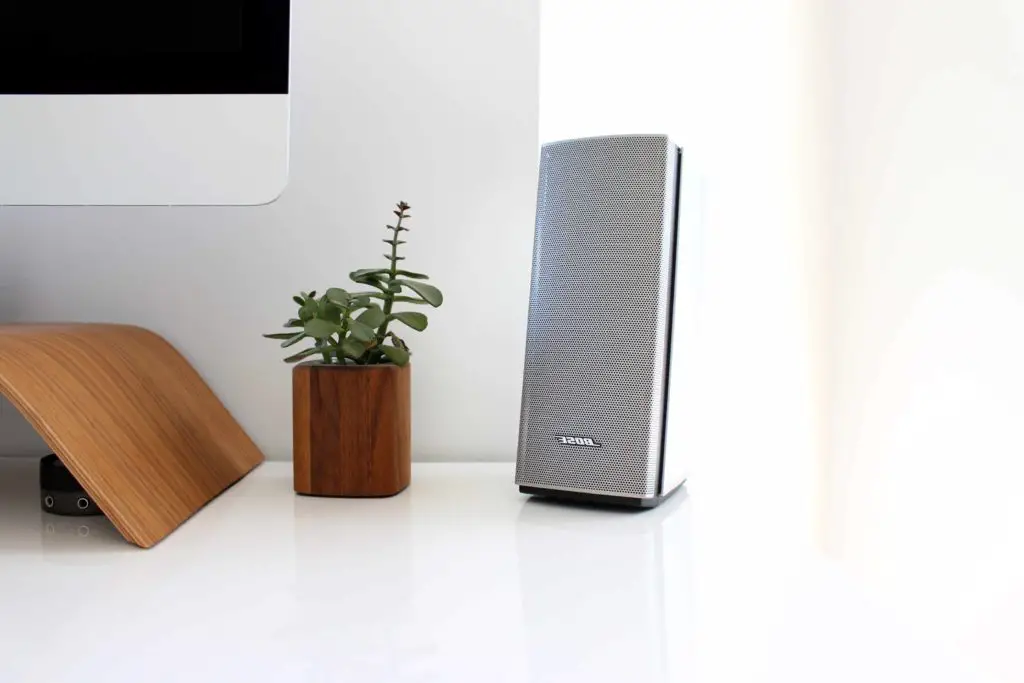The best way to weigh down speaker stands is to unscrew the plate of the stand and fill them with sand or any material of choice.
Audiophiles understand the need to weigh down a speaker stand in order to experience the best acoustics in their sound system. This is why no acoustic enthusiast worth his salt would even think of using a speaker, especially a bookshelf speaker, without weighing it down first.
But how do you weigh down a set of speaker stands, and why is it even necessary?
Find out the answer below!

How To Weigh Down Speaker Stands
Some speaker stands are pre-filled, so you don’t have to take the trouble of weighing them down. But most speaker models have hollow stands, which you need to weigh down by filling them.
Speaker sets can vary slightly from one model and manufacturer to the other However, the basic steps of weighing them down are the same. If you’re not sure how to start, here’s an easy step by step guide on how to weigh down speaker stands like a pro
Note: Weighing down the speaker stands can be messy, so it is best to do it outside. Also, consider covering the base of the speaker stands with rags to avoid a mess and clean up faster later.
Step 1: Unscrew the plate
Depending on the model and manufacturer, some speaker stands come with assembled stands, so you need to unscrew the plates above the stands. Unscrewing the plates should be easy, and a generic screwdriver is all you need.
Some speaker stands arrive with separate parts, which require you to assemble. In this case, you don’t need to unscrew the plates.
Step 2: Fill the stand
Filling the holes of the speaker stand is pretty straightforward.
Volcanic sand is the gold standard among audiophiles to weigh down the speaker stands because it is exceptionally dense.
However, you also have other options, such as cotton, uncooked rice, unused cat litter, and sand. Some people also use lead shots to weigh down the speaker stands, but it is a hazardous material and requires a lot of precautions. If you choose to use a lead shot, wear protective clothing, including gloves, and use them away from children and pets.
Using a funnel to fill the stands is a good idea. In addition, you want to add the fillers in stages so that you get the best sound quality.
Step 3: Cover and test
After you fill the stands about halfway, it’s time to start sound testing. Screw the plates properly, mount the speakers and play a few songs to test whether you like the sounds, taking note of the bass in particular.
This can seem unnecessary and time-consuming, but it is completely worth it. If you are happy with the speaker sound, you can proceed to take the speaker stands indoors for a proper setup.
However, if you think the sound is hollow or unsatisfactory, unscrew the plates and repeat until you are happy with the results.
Why Weighing Down Speaker Stands Is Required
Weighing down your speaker stands has a lot of benefits which include:
Stability
Bookshelf speakers come with hollow stands, which can cause stability issues, especially when the speakers are on top and you are playing a loud sound. If the speaker stands are not stable, it can also be prone to toppling over, which can result in dangerous situations, especially if you have kids around the house.
Filling the hollow stands eliminates the rocking that may be created, especially when the speakers are in use.
Better Sound Quality
With a stable stand comes better sound quality, particularly the bass component. Weighing down the speaker stands delivers the optimum bass response, which can be present with an otherwise hollow speaker.
Conclusion
A stable and solid speaker is the ideal setup to get the best sound out of your sound system. And filling these hollow stands with sand, rice, or any other material mentioned above is a fantastic way to achieve a stable stand and enjoy an outstanding audio experience.
Weighing down the stands not only makes them stable and secure but also gives you full control over the sound system in your home. You can tweak the bass, whichever way you prefer.